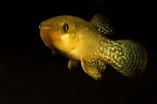(Press-News.org) PRINCETON, N.J.—America's unemployment rate — most recently reported as 6.1 percent — has long been used to gauge the country's economic well-being. But a new working paper released by Princeton University's Woodrow Wilson School of Public and International Affairs highlights the difficulty in estimating the exact unemployment rate, though changes in the official measure still signal important movements in the economy.
The research, published by the National Bureau of Economic Research, finds that the true unemployment rate may be higher or lower than recent reports indicate. In fact, the authors write that published unemployment rates have gradually become more difficult to interpret over time, especially in the last two decades. The researchers cite survey design changes as a likely culprit, in large part because the changes corresponded with an increase in nonresponse rates by Americans.
"It is potentially a huge issue," said Alan Krueger, the Bendheim Professor in Economics and Public Policy at the Wilson School and former chairman of President Barack Obama's Council of Economic Advisers. "But our results do suggest several important avenues for future research and improvements in the data."
To calculate the unemployment rate, the U.S. Census Bureau and U.S. Bureau of Labor Statistics administer the Current Population Survey (CPS), which collects extensive demographic data to better understand labor market fluctuations and economic conditions. The CPS consists of a sample of nearly 60,000 households in all U.S. states and the District of Columbia. Households are surveyed monthly for four consecutive months, left alone for eight months and then surveyed again monthly during the final four months. In any given month, there are eight "rotation groups," depending on how many months the households have been in the survey so far. Each rotation group is designed to be representative of the population. The official unemployment rate is a weighted average of the eight groups.
Krueger and his collaborators — Alexandre Mas, professor of economics and public affairs at Princeton's Wilson School, and Xiaotong Niu, an analyst at the Congressional Budget Office — found that in the first half of 2014, the unemployment rate among people in the first month of being interviewed was 7.5 percent. However, for those in the final month of being interviewed, it was only 6.1 percent. Because the Bureau of Labor Statistics weights the first interview more heavily, the official unemployment rate for this period was 6.5 percent.
This disparity between interview groups, known technically as "rotation group bias," isn't new. But Krueger's paper is the first since 1975 to explore the growing magnitude and evolution of such discrepancies. This new paper shows that rotation-group bias has doubled since 1994, when the CPS underwent a major redesign.
"It is unclear which rotation group provides the most accurate measure of the unemployment rate," said Krueger. "The unemployment rate for each rotation group tends to rise or fall together over time."
Two decades ago, the CPS moved from pen-and-paper questionnaires to computer-assisted phone interviews. They also changed the language and logic behind some of the questions. Shortly after the redesign, CPS began seeing a large rise in nonresponse rates.
Interestingly, the study shows that this same kind of bias isn't found when looking at data from the United Kingdom and Canada, which also use rotating groups to measure their unemployment rates. This finding suggests several avenues for future research including examining the details of the surveys themselves, like the nature of the questionnaire, the interviewing methods and the survey response rates. All, Krueger said, play a pivotal role in shaping the unemployment figure outcomes.
INFORMATION:
The paper, "The Evolution of Rotation Group Bias: Will the Real Unemployment Rate Please Stand Up?," was published online in August by NBER.
To read more Wilson School research briefs, visit http://wws.princeton.edu/faculty-research/research-briefs.
Will the real unemployment rate please stand up?
2014-09-10
ELSE PRESS RELEASES FROM THIS DATE:
Sequencing and analysis of gibbon genome sheds light on its complex evolution
2014-09-10
PORTLAND, Ore. — A team led by an Oregon Health & Science University researcher has sequenced and annotated the genome of the only ape whose DNA had yet to be sequenced — the gibbon, an endangered small ape that inhabits the tropical forests of Southeast Asia.
The team's work, published in the Sept. 11 edition of Nature, gives scientists new insight into the evolution of the gibbon genome and its extraordinary number of chromosomal rearrangements. Chromosomal rearrangements are structural changes in the DNA that are often problematic in other species — including causing ...
Gibbon genome and the fast karyotype evolution of small apes
2014-09-10
BATON ROUGE – LSU's Mark Batzer, LSU Boyd Professor and Dr. Mary Lou Applewhite Distinguished Professor, along with Research Assistant Professor Miriam Konkel and Research Associate Jerilyn Walker in Department of Biological Sciences in the College of Science, contributed to an article featured on the cover of the scientific journal Nature, titled "Gibbon Genome and the Fast Karyotype Evolution of Small Apes."
An abstract of the article can be found at http://www.nature.com/nature/journal/v513/n7517/full/nature13679.html?WT.ec_id=NATURE-20140911. The issue of Nature will ...
NASA sees a significant flare surge off the sun
2014-09-10
The sun emitted a significant solar flare, peaking at 1:48 p.m. EDT on Sept. 10, 2014. NASA's Solar Dynamics Observatory captured images of the event.
Solar flares are powerful bursts of radiation. Harmful radiation from a flare cannot pass through Earth's atmosphere to physically affect humans on the ground. However -- when intense enough -- they can disturb the atmosphere in the layer where GPS and communications signals travel.
To see how this event may affect Earth, please visit NOAA's Space Weather Prediction Center at http://spaceweather.gov, the U.S. government's ...
Study provides more evidence that sleep apnea is hurting your brain
2014-09-10
Employing a measure rarely used in sleep apnea studies, researchers at the UCLA School of Nursing have uncovered evidence of what may be damaging the brain in people with the sleep disorder — weaker brain blood flow.
In the study, published Aug. 28 in the peer-reviewed journal PLOS ONE, researchers measured blood flow in the brain using a non-invasive MRI procedure: the global blood volume and oxygen dependent (BOLD) signal. This method is usually used to observe brain activity. Because previous research showed that poor regulation of blood in the brain might be a problem ...
Sharks more abundant on healthy coral reefs
2014-09-10
Sharks in no-fishing zones in the Great Barrier Reef (GBR) Marine Park are more abundant when the coral is healthy, according to a study published September 10, 2014 in the open-access journal PLOS ONE by Mario Espinoza from James Cook University, Australia and colleagues.
Shark species that use coral reefs may be under pressure from fishing, habitat degradation, and climate change. The authors of this study were interested in understanding the factors that affect the distribution and abundance of shark populations in the GBR, including fishing and habitat quality. To ...
Gulf killifishes' biological responses to oil spills similar in field, laboratory studies
2014-09-10
Gulf killifish biological responses to the Deepwater Horizon oil spill detected by researchers in the field are similar to those in controlled laboratory studies, according to a study published September 10, 2014 in the open-access journal PLOS ONE by Whitney Pilcher from Louisiana State University and colleagues.
After the Deepwater Horizon oil spill, scientists monitored the impacts of oil on a local species of fish, the Gulf killifish. Changes in genome expression responses to oil exposure may provide insight into how the fish are affected by or adapt to environmental ...
New study shows impact of movies on dog breed popularity
2014-09-10
The effect of movies featuring dogs on the popularity of dog breeds can last up to ten years and is correlated with the general success of the movies, according to new research from the University of Bristol, the City University of New York, and Western Carolina University.
The study, published today in PLOS ONE, also found that movies' influence was strongest in the early twentieth century and has declined since.
The researchers used data from the American Kennel Club, which maintains the world's largest dog registry totalling over 65 million dogs, and analysed a total ...
New 3-D imaging techniques may improve understanding of biofuel plant material
2014-09-10
Comparison of 3D TEM imaging techniques reveals never-seen-before details of plant cell walls, according to a study published September 10, 2014 in the open-access journal PLOS ONE by Purbasha Sarkar from University of California, Berkeley and colleagues.
Cost-effective production of plant material for biofuel requires efficient breakdown of plant cell wall tissue to retrieve the complex sugars in the cell wall required for fermentation and production of biofuels. In-depth knowledge of plant cell wall composition is therefore essential for improving the fuel production ...
New study examines impact of violent media on the brain
2014-09-10
(NEW YORK – September 10, 2014) With the longstanding debate over whether violent movies cause real world violence as a backstop, a study published today in PLOS One found that each person's reaction to violent images depends on that individual's brain circuitry, and on how aggressive they were to begin with.
The study, which was led by researchers at the Icahn School of Medicine at Mount Sinai and the NIH Intramural Program, featured brain scans which revealed that both watching and not watching violent images caused different brain activity in people with different ...
Study ties groundwater to human evolution
2014-09-10
Our ancient ancestors' ability to move around and find new sources of groundwater during extremely dry periods in Africa millions of years ago may have been key to their survival and the evolution of the human species, a new study shows.
The research – published in the journal PLOS ONE – combines geological evidence from the Olduvai sedimentary basin in Northern Tanzania, which formed about 2.2 million years ago, and results from a hydrological model.
It shows that while water in rivers and lakes would have disappeared as the climate changed due to variations in the ...



